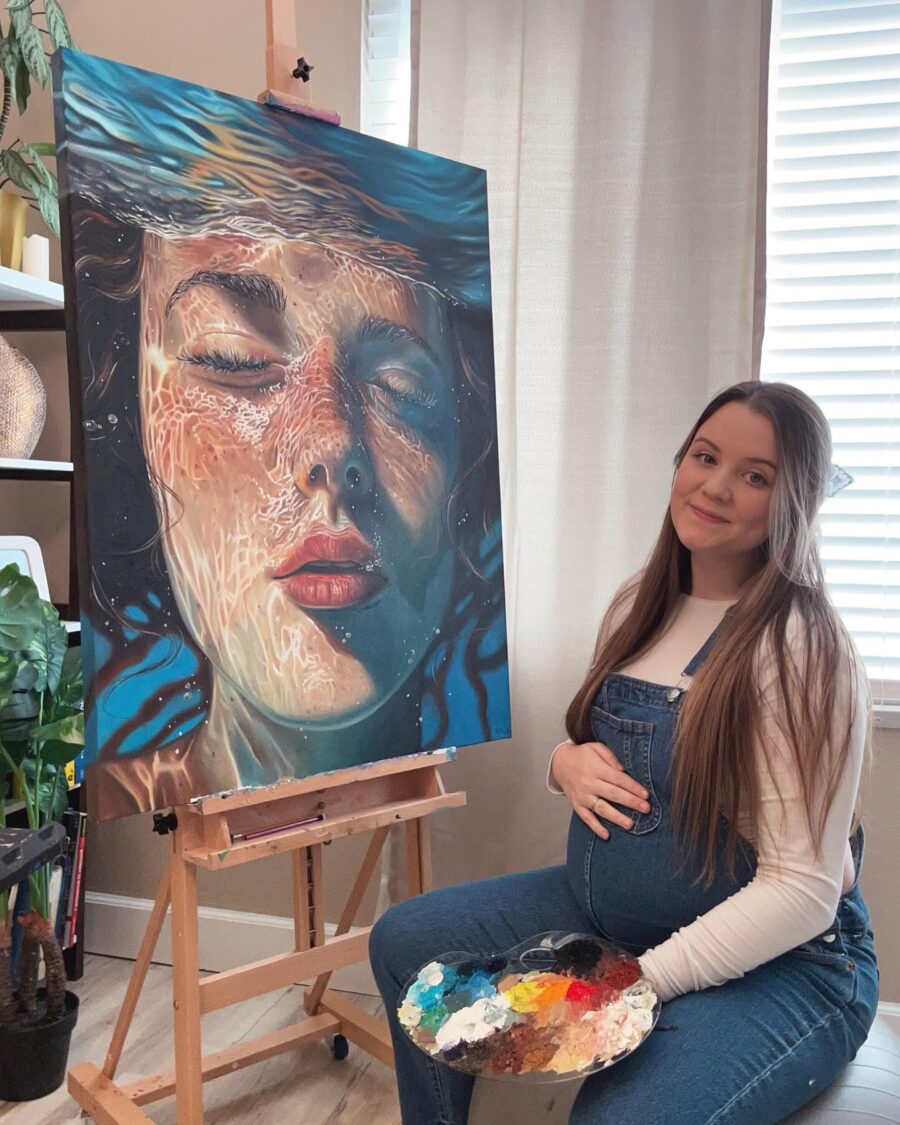A full-time oil painter and mother from Oregon, Kayla Carlile has a social media following of nearly 900,000 across multiple platforms. Her success represents a significant shift in the art world, where artists’ professional identity is now inextricably linked to their digital presence. This model challenges traditional gatekeeping by galleries and critics, and prompts a re-evaluation of artistic value.
The Historical Context of Digital Art
Kayla Carlile’s practice is not an anomaly but a continuation of a six-decade-long dialogue between artists and technology. Early digital art can be traced to the mid-20th century, with artists like Ben Laposky using oscilloscopes to create electronic-wave compositions in the 1950s. Later, in the 1960s and 70s, Vera Molnár and Manfred Mohr used computer labs and programming languages like FORTRAN to create generative, algorithmic drawings. These early works were conceptual, exploring the relationship between human creativity and machine logic.
The trajectory of digital art moved from the institutional to the personal with the rise of personal computing in the 1980s and the internet in the 1990s. This democratization of access led to a proliferation of online platforms like Adaweb and The Thing, which became important experimental spaces for “digital-born” art. This was followed by the “post-Internet” art movement in the mid-2000s, which embraced the visual language of the internet, such as memes and GIFs, as a medium. Carlile’s practice represents the next step in this evolution, where social media platforms are not just a distribution channel, but a core component of her business and identity.
The “Kayla Carlile Model”: A New Studio and Market
Kayla Carlile works with classical media like oil and acrylic to create large-scale artworks and murals. However, she also fluently employs digital tools, using a Wacom tablet and software like Painter Essentials for custom portraits and idea generation, a hybrid approach she calls her “diverse” style. A key aspect of her success is strategic transparency on platforms like Instagram, where she documents her “art progress” through time-lapse videos and behind-the-scenes content. This transforms the solitary act of painting into a compelling public performance that builds a loyal audience of nearly a million followers.
This massive following is the engine of a business model that bypasses the traditional gallery system. Carlile sells original paintings and merchandise like prints, posters, and mugs directly to consumers through her own website and at the Eugene Saturday Market. This approach is validated by the exponential growth of the online art market, which has increased by 72% in the last five years. Over 71% of collectors have purchased art online, and 48% of art buyers use Instagram for discovery.
In this new ecosystem, the valuation of artwork is no longer determined solely by critics or gallerists but is heavily influenced by public engagement metrics. This creates an “emotional economy” where the artist’s persona and process are commodified, and content creation becomes as valuable as the artwork itself. The provided research emphasizes that artists must create a “unified visual language” and post consistently to succeed. Carlile achieves this by posting behind-the-scenes content and using “micro rewards,” such as revealing a finished piece after a build-up. Academic research supports these strategies, noting that interactions like asking questions and sharing life experiences have a “positive influence on the most-liked artworks”. Carlile has implemented these exact strategies, using Instagram polls to gauge audience preferences and ask for input on her paintings. Her personal story—from a teen mother to a successful artist—is a powerful part of her brand identity, fostering an emotional connection with her audience. This model blurs the line between artist, influencer, and entrepreneur, as Carlile turns the marketing process itself into a form of art.
The Double-Edged Canvas: Challenges of Digital Artistry
While social media offers democratizing potential, it also presents ethical and aesthetic challenges. The “Instagrammable Culture” often prioritizes visual appeal over contextual or historical considerations. This can lead to a “flattening of discourse” where art that is “easily consumable and visually appealing” is promoted, potentially disregarding works that require deeper reflection. This algorithmic pressure can make artists feel their individuality is being sacrificed for views and likes.
The legal landscape is also fraught with challenges. Although artists own the copyright to their work, the terms of service for social media platforms often require users to grant the company a broad license to use their content, blurring the lines of ownership. The burden of navigating intellectual property concerns, such as the legal gray area of fan art and derivative works, falls on the individual artist, a role traditionally handled by galleries or agents. The shift to social media has also changed art criticism. The boundaries between “professional” and “public” opinion are now blurred, making public discussion of artwork more vulnerable to the whims of viral trends.
Beyond the Scroll: The Future of Art
The “Kayla Carlile model” is a bellwether for future trends in the art world. One of the most significant is the integration of artificial intelligence (AI) into the creative process. While some view AI as a threat, art-tech experts see it as a “collaborative tool” that can enhance human creativity by generating ideas and exploring new styles. Social media is an ideal platform for showcasing these evolving hybrid techniques, but it also raises new questions about authorship and intellectual property.
Additionally, social media is moving towards smaller, more decentralized communities due to growing privacy concerns. This could lead to a future where artists build micro-communities on platforms that offer greater user control, departing from the one-to-many model of Instagram. Immersive technologies like augmented and virtual reality (AR/VR) are also poised to transform how art is experienced, moving beyond a simple visual feed to create “participatory and interactive” installations. The future art market will likely favor artists who can leverage these technologies to create immersive experiences that deepen the audience’s emotional connection to their work and story.
Kayla Carlile’s career is a testament to the power of the internet as a medium for both creation and commerce, demonstrating that traditional gatekeepers are no longer the sole arbiters of artistic value. However, this new model also presents challenges, blurring the line between artist and brand, creator and content-maker. Her career leaves us with a lingering question: In a world where art is consumed in the feed, does the depth of a painting still matter more than the number of likes it receives?. The answer, now more than ever, is likely in the eyes of the beholder, and the beholder is everyone.









